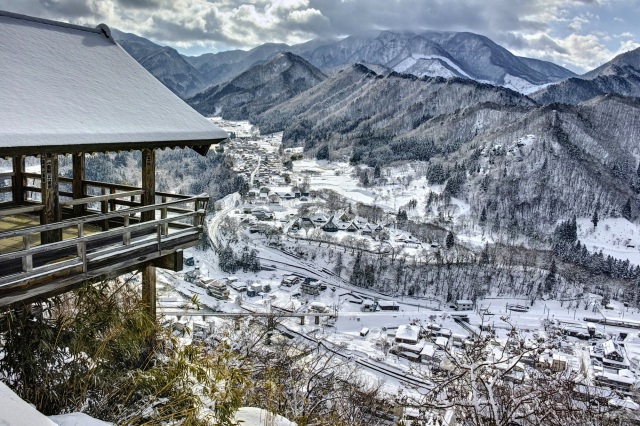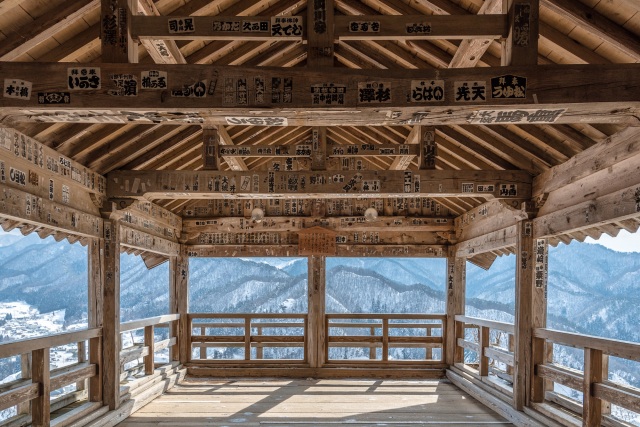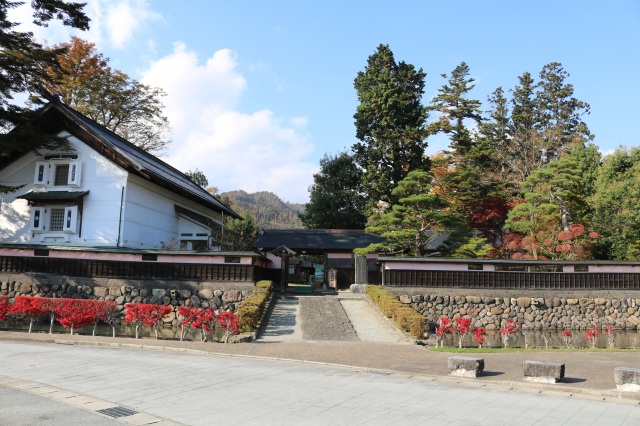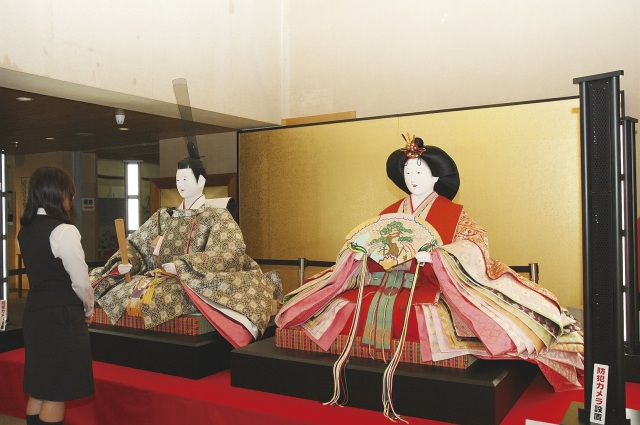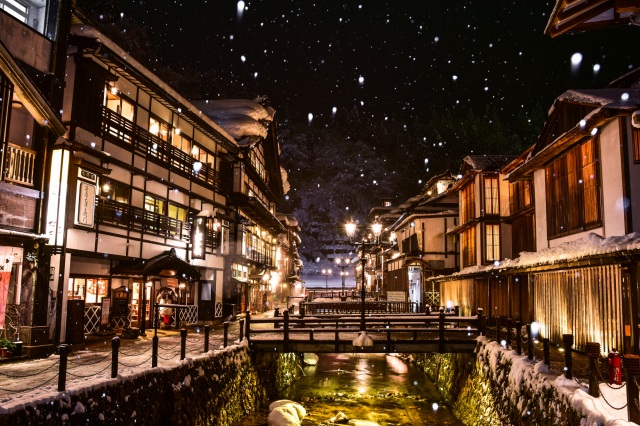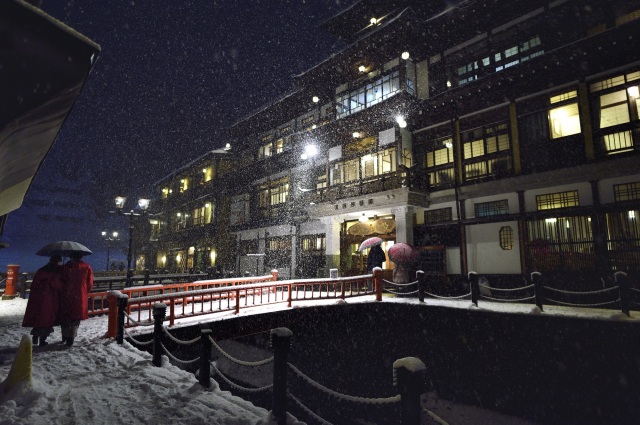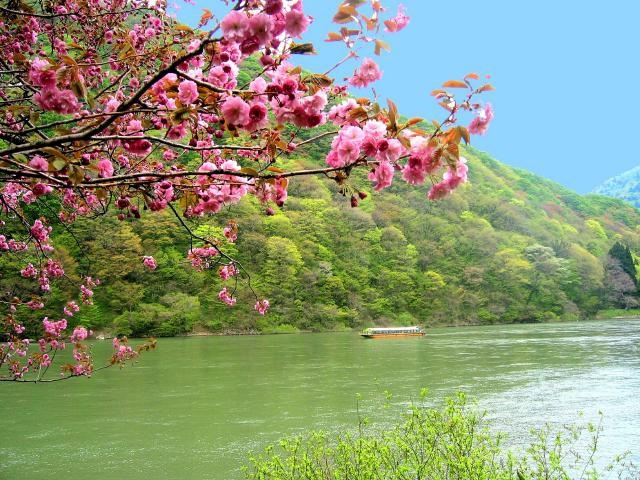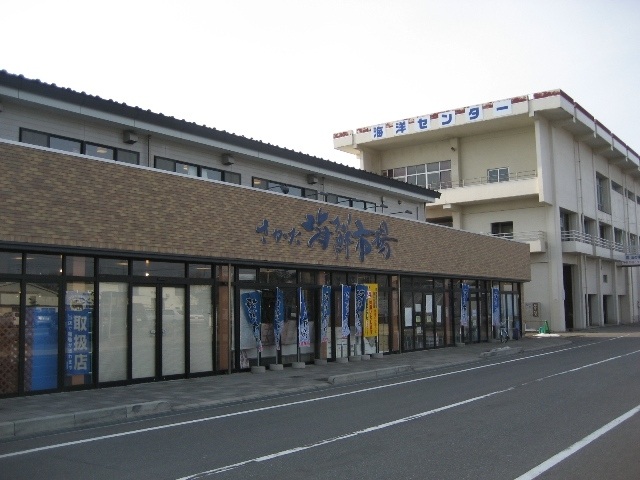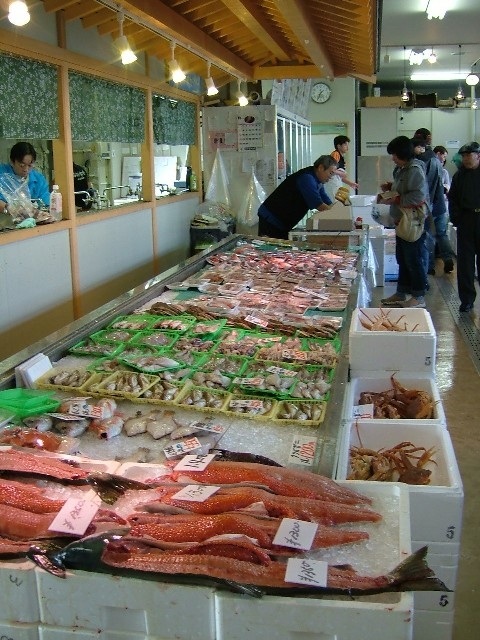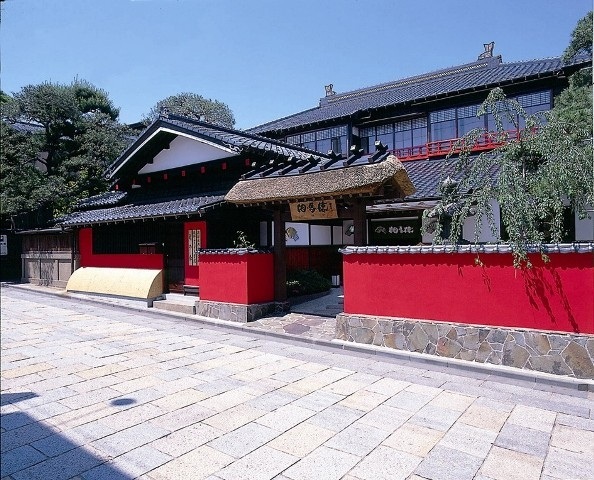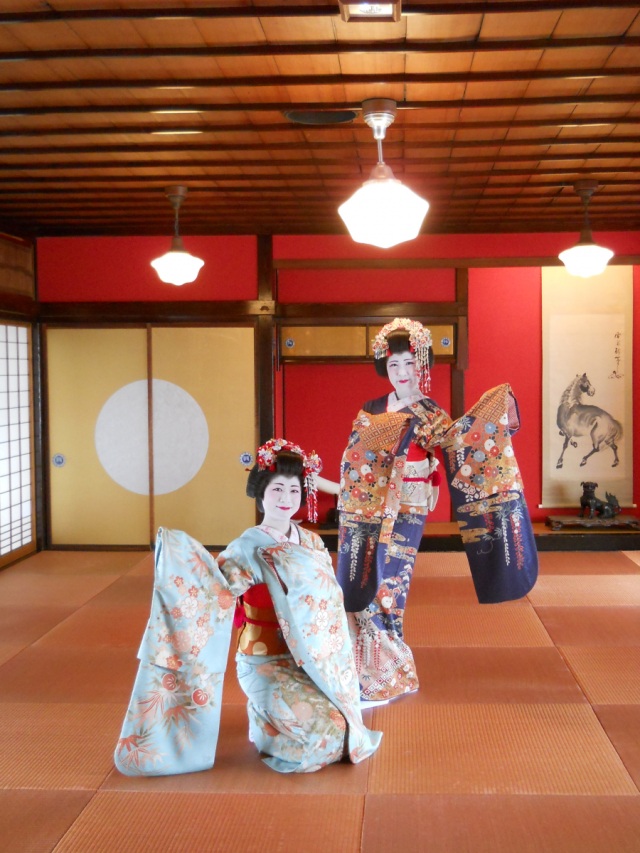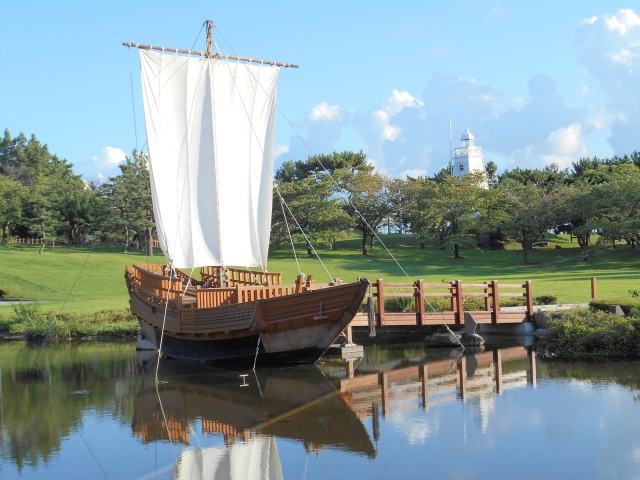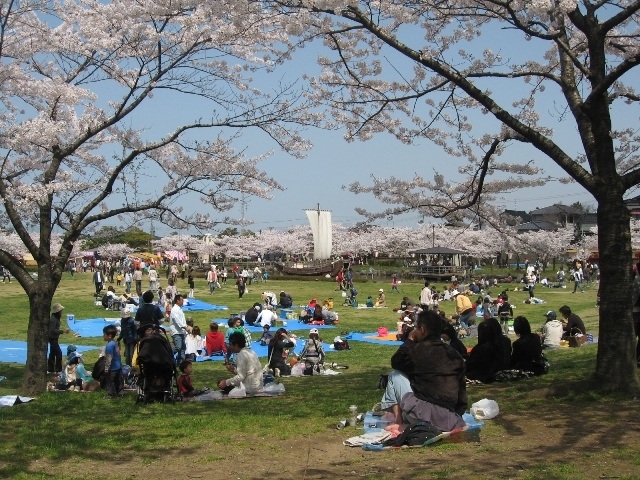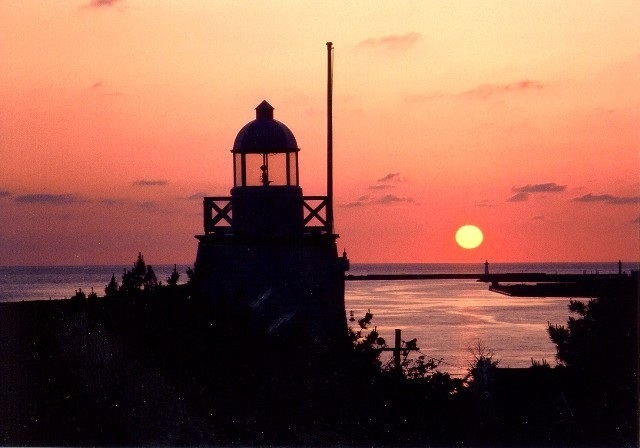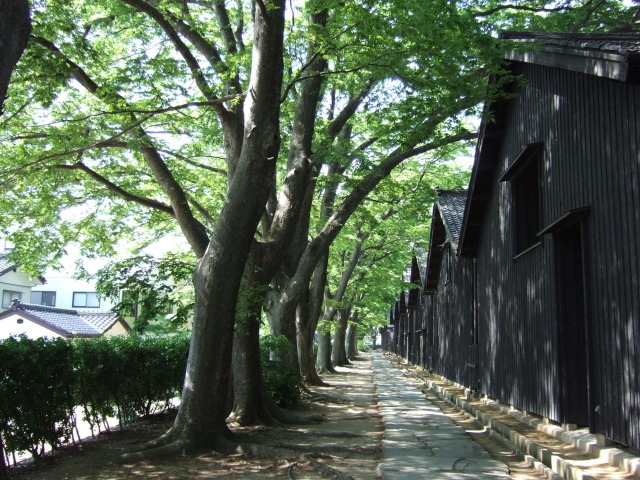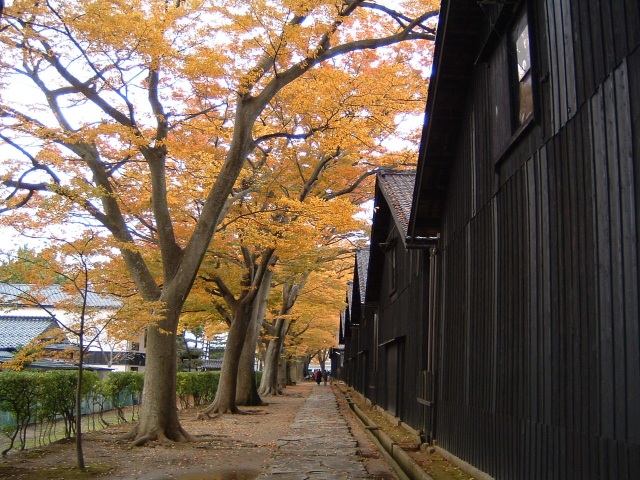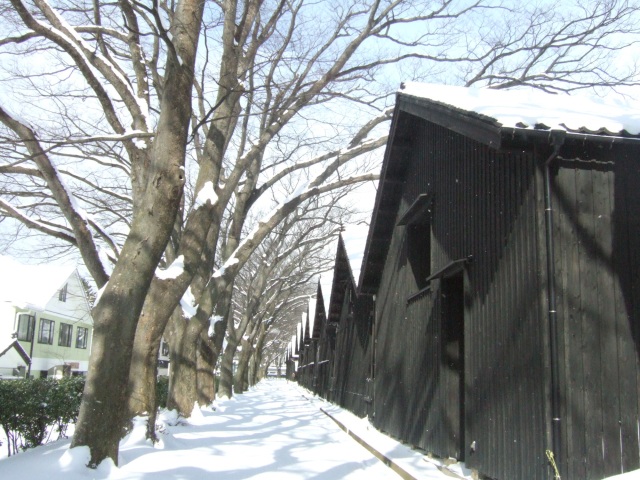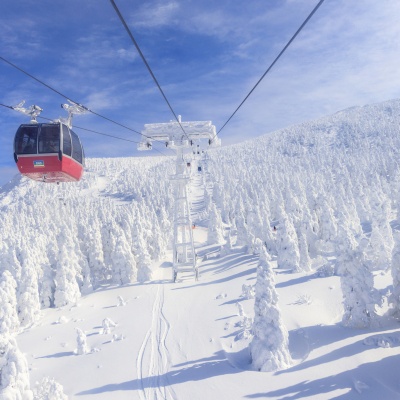Nostalgic tour to visit spots in Ginzan Onsen related to the TV series Oshin
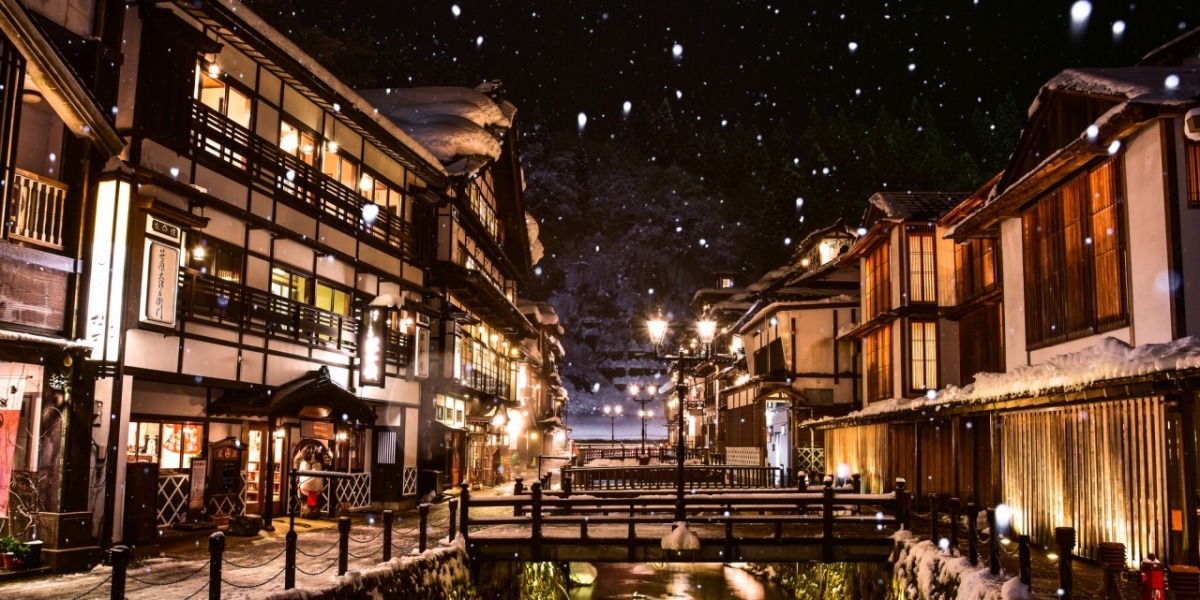
- Suggested Time
- 2 days / 1 nights
- Transport Options
- Drive
A tour of spots rich with Japanese atmosphere centered on filming locations and other sites related to the TV series Oshin
START
Day1
30 minutes
Risshaku-ji Temple
The historic temple rising to the sky along delightful mountain paths described in the great Haiku master’s poem
Risshaku-ji Temple is popularly known as Yamadera (Mountain Temple). The rocky mountain itself is a sacred location for ascetic Zen practices. Visitors can enjoy breath-taking views along the one-hour path from the foot of the mountain to Okunoin Temple and Daibutsuden Hall at the top. The great Haiku master Basho Matsuo composed one of his best-known Haiku poems “Shizukesa ya/iwa ni shimiiru/semi no koe” in the work “Oku no Hosomichi” (Narrow Road to the Deep North) while walking this path.
The series of 1,015 stone steps to Okunoin Temple is said to steadily release visitors from their worldly desires as they ascend. The many historic sites and scenic locations along the way encourage visitors to continue the climb while enriching the mind and senses.
The path begins with Konpon Chudo Hall, the oldest cedar wood building in Japan and a designated Important Cultural Property. Midahora Rock is a lucky location that is said to bring happiness if visitors can find the figure of Buddha on the side of the rock eroded by wind and rain over thousands of years. Passing through the Niomon Gate with a pair of fierce guardian god statues brings you to the majestic Kaizando and Nokyodo Halls. The red Nokyodo Hall sitting on a craggy mountain outcrop is an iconic view of the Yamadera. The steps on from Kaizando Hall take visitors to Godaido Hall which is evocative of a traditional Noh stage offering a panoramic view of the surrounding mountains. The final destinations are Okunoin Temple and Daibutsuden Hall, which is said to expel evil spirits.
After exploring the mountain temples be sure to enjoy the variety of local specialties available at the nearby shops including Yamadera Chikara Konjac, cherry ice cream and Dashi Soba noodles!
The series of 1,015 stone steps to Okunoin Temple is said to steadily release visitors from their worldly desires as they ascend. The many historic sites and scenic locations along the way encourage visitors to continue the climb while enriching the mind and senses.
The path begins with Konpon Chudo Hall, the oldest cedar wood building in Japan and a designated Important Cultural Property. Midahora Rock is a lucky location that is said to bring happiness if visitors can find the figure of Buddha on the side of the rock eroded by wind and rain over thousands of years. Passing through the Niomon Gate with a pair of fierce guardian god statues brings you to the majestic Kaizando and Nokyodo Halls. The red Nokyodo Hall sitting on a craggy mountain outcrop is an iconic view of the Yamadera. The steps on from Kaizando Hall take visitors to Godaido Hall which is evocative of a traditional Noh stage offering a panoramic view of the surrounding mountains. The final destinations are Okunoin Temple and Daibutsuden Hall, which is said to expel evil spirits.
After exploring the mountain temples be sure to enjoy the variety of local specialties available at the nearby shops including Yamadera Chikara Konjac, cherry ice cream and Dashi Soba noodles!
35 minutes
Kahoku specialty: Chilled buckwheat soba noodles with meat
Kahoku's specialty of chilled soba noodles with meat is different from other soba noodles with meat. The soba is of course rural-style soba noodles with a chewy texture. The dish features a sweet and salty chilled soup made from chicken broth as well as chewy braised chicken slices from chicken that have laid eggs.
10 minutes
Benihana Musuem
45 minutes
Stay one night in Onsen
This classic hot spring town lined with traditional wooden architecture is full of photogenic nostalgia!
Travel back in time to classical Japan in Ginzan Onsen! The town is home to wooden hot spring inns lining each side of the Ginzan River and resonates with nostalgic beauty when illuminated at night by gas street lamps. The view reminds visitors of scenes from the famous film “Sprinted Away” by Hayao Miyazaki. Before that the town was used as a location of NHK’s popular TV drama series “Oshin”, a monumental hit of 1983. The night view of the town blanketed in snow beneath the warm streetlights is particularly photogenic during winter.
Walking along the town’s streets visitors will find colourful pictures known as Kote-e on the walls of hot spring inns and snowflake designs on tiles on the roads. Relax your feet in hot spring water rising directly from its source at the “Warashiyu” footbaths along the Ginzan River while exploring the town! The compact town is suitable for strolling around and has a variety of cafes, eateries and gift shops. Classical costumes of the Taisho period can be rented from local shops to enhance the Onsen experience and take visitors back to the time when Japanese arts and culture flourished following exposure to western cultural influences. Why not enjoy strolling around this picturesque town in a chic costume?
The town is covered with deep snow in winter however it is easily accessible via a 3-hour Shinkansen from Tokyo and direct 40-minute bus ride. A relaxing soak in a hot spring surrounded by snowy scenery is an exceptional delight! After a warm hot spring bath, enjoy savouring local specialties including the local Wagyu beef “Obanazawa” and Obanazawa Soba noodles!
Neighbouring natural attractions include Senshinkyo Gorge, a scenic location during the seasons of verdant greens and autumn leaves and the 22-metre vertical drop of Shirogane-no-taki Waterfall.
Walking along the town’s streets visitors will find colourful pictures known as Kote-e on the walls of hot spring inns and snowflake designs on tiles on the roads. Relax your feet in hot spring water rising directly from its source at the “Warashiyu” footbaths along the Ginzan River while exploring the town! The compact town is suitable for strolling around and has a variety of cafes, eateries and gift shops. Classical costumes of the Taisho period can be rented from local shops to enhance the Onsen experience and take visitors back to the time when Japanese arts and culture flourished following exposure to western cultural influences. Why not enjoy strolling around this picturesque town in a chic costume?
The town is covered with deep snow in winter however it is easily accessible via a 3-hour Shinkansen from Tokyo and direct 40-minute bus ride. A relaxing soak in a hot spring surrounded by snowy scenery is an exceptional delight! After a warm hot spring bath, enjoy savouring local specialties including the local Wagyu beef “Obanazawa” and Obanazawa Soba noodles!
Neighbouring natural attractions include Senshinkyo Gorge, a scenic location during the seasons of verdant greens and autumn leaves and the 22-metre vertical drop of Shirogane-no-taki Waterfall.
Day2
1 hour
Mogami River Basyo Line Descent
Go down the magnificent Mogami River while listening to the barcarolle of the boatman and the famous stories.
Let yourself be in the flow of the Mogami River and enjoy the scenery from the boat. You can enjoy the slow boat descent while listening to the boatman's song in the magnificent nature at any time of the four seasons. In winter, there is also a "Kotatsu boat" service. (December to the end of March)
45 minutes
Lunch at Sakata Seafood Market
5 minutes
Somaro
5 minutes
Hiyoriyama Park
Learn about the historic port town of Sakata at this park with an iconic white lighthouse and traditional white sailing ship!
Hiyoriyama Park is a historic park in the port town of Sakata. The park is a popular scenic location for cherry blossom viewing and offers dazzling views of the sunset over the Sea of Japan.
The chalk-white hexagonal lighthouse, one of Japan’s oldest wooden lighthouses, is a popular symbol of Hiyoriyama Park. The lighthouse was founded in 1813 to guide Kitamaebune cargo vessels at night and was a focus for prayers for safe journeys by the boatmen and shipping agents who regularly came to the port of Sakata.
The other well-known feature of the park is a Kitamaebune boat with a beautiful white sail. The half-scale model ship is the largest in Japan. Kitamaebune boats were also known as Sengokubune (1,000-koku vessels) because they had space for 1,000 koku (150 tons) of rice. The largest Kitamaebune with only one square sail could carry 2,400 koku (360 tons) of cargo.
The Kitamaebune ships also carried out extensive trade at ports along the route. It is said that a return journey between Osaka and Hokkaido could bring a profit of 1,000 ryo (Japan’s pre-Meiji gold currency). Today the model ship informs visitors about the history of the period and the boatmen’s dreams of making their fortune.
The park has a lovely strolling path with 29 monuments introducing writers and artists who visited Sakata. Enjoy learning about the history of this port town while taking a pleasant walk!
The chalk-white hexagonal lighthouse, one of Japan’s oldest wooden lighthouses, is a popular symbol of Hiyoriyama Park. The lighthouse was founded in 1813 to guide Kitamaebune cargo vessels at night and was a focus for prayers for safe journeys by the boatmen and shipping agents who regularly came to the port of Sakata.
The other well-known feature of the park is a Kitamaebune boat with a beautiful white sail. The half-scale model ship is the largest in Japan. Kitamaebune boats were also known as Sengokubune (1,000-koku vessels) because they had space for 1,000 koku (150 tons) of rice. The largest Kitamaebune with only one square sail could carry 2,400 koku (360 tons) of cargo.
The Kitamaebune ships also carried out extensive trade at ports along the route. It is said that a return journey between Osaka and Hokkaido could bring a profit of 1,000 ryo (Japan’s pre-Meiji gold currency). Today the model ship informs visitors about the history of the period and the boatmen’s dreams of making their fortune.
The park has a lovely strolling path with 29 monuments introducing writers and artists who visited Sakata. Enjoy learning about the history of this port town while taking a pleasant walk!
5 minutes
Sankyo Soko Storehouse
These functioning rice storehouses form a picturesque view with their black wooden walls lined with a row of Keyaki trees
Built in 1893, the Sankyo Soko Storehouses continue to function today as rice storehouses. The impressive wisdom of the builders can be seen in such things as the double roof used for insulating heat and the row of Keyaki trees planted behind the storehouses to protect them from the afternoon sun and strong winds. Today the storehouses continue to protect the rice contained within them from heat and moisture using the same traditional methods.
The row of storehouses emanates a nostalgic atmosphere and maintains traces of the years when the area flourished as a port for rice shipments. The storehouses are a popular photography location as well as a favourite location for shooting movies and TV dramas. The storehouses gained fame after appearing in NHK’s popular TV drama series “Oshin”.
Standing beside the Mogami River the storehouses create fascinating views in combination with the port and small wooden rice-shipping boats. Their triangular roofs and white walls reflect serenely on the river water. On the other side of the storehouses is a parallel row of Keyaki trees which in combination with the stone pavements and the storehouses’ black wooden walls create more photogenic vistas! Visitors can enjoy pleasant scenes throughout the year including verdant greens of the Keyaki trees in summer, snow-capped triangular roofs in winter, illuminated storehouses at dusk and glittering stone pavements in the rain. The incredible views change depending on the season and time of day.
Regional products including tasty rice and local sake are available at the adjoining Sakata Yumenokura. The on-site restaurant offers dishes made with fresh seafood and harvests from the Shonai plains. The terrace seats are a lovely option to enjoy a drink and a meal on fine days.
The row of storehouses emanates a nostalgic atmosphere and maintains traces of the years when the area flourished as a port for rice shipments. The storehouses are a popular photography location as well as a favourite location for shooting movies and TV dramas. The storehouses gained fame after appearing in NHK’s popular TV drama series “Oshin”.
Standing beside the Mogami River the storehouses create fascinating views in combination with the port and small wooden rice-shipping boats. Their triangular roofs and white walls reflect serenely on the river water. On the other side of the storehouses is a parallel row of Keyaki trees which in combination with the stone pavements and the storehouses’ black wooden walls create more photogenic vistas! Visitors can enjoy pleasant scenes throughout the year including verdant greens of the Keyaki trees in summer, snow-capped triangular roofs in winter, illuminated storehouses at dusk and glittering stone pavements in the rain. The incredible views change depending on the season and time of day.
Regional products including tasty rice and local sake are available at the adjoining Sakata Yumenokura. The on-site restaurant offers dishes made with fresh seafood and harvests from the Shonai plains. The terrace seats are a lovely option to enjoy a drink and a meal on fine days.
10 minutes
GOAL

